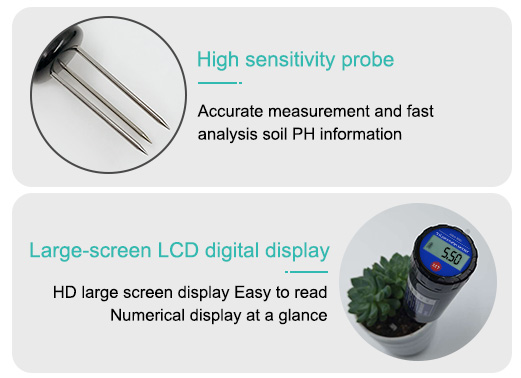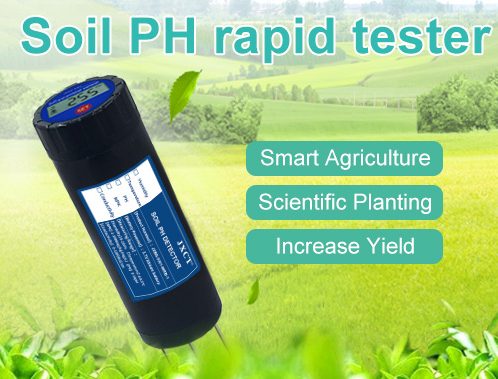A soil pH sensor is measure the acidity or alkalinity of the soil. In this article, I’ll cover everything about soil pH testers and soil pH – what is pH, why it’s important, and what should be the soil pH value. I will also explain what exactly a soil pH tester is, what different types of testers are, and whether are they accurate. I will also review the best soil pH testers and give you a rundown of their pros, cons, and how to use them.
Why Is Soil pH Important?
The value of soil pH determines how accessible nutrients in the soil will be to your plants. If the soil pH has a value suitable for the plants you are growing, the plants will be able to access nutrients from the soil. If the pH of your soil is not suitable, the plant will either experience nutrient deficiency or nutrient toxicity.
What Should Be The Soil pH Level?

Most healthy garden soil should have a pH of 6.5 or close to 6.5. Soil for indoor plants (container plants) should have a pH range between 5.5 and 6.5. At that pH range, plants will be able to access all the essential nutrients from the soil.
Some exceptions are carnivorous plants, blueberries, azaleas, and rhododendrons, which require acidic soil below 5.5.
Is It Important To Know The Soil pH Accurately?
You don’t need to know the precise pH levels of your soil if you are a hobby plant grower. An approximate pH value will be sufficient. The reason for that is that most plants grow well in a wide pH range. As long as you know whether your soil is very acidic, slightly acidic, slightly alkaline, or very alkaline is good enough.
If you are a commercial grower of indoor plants, fruits, or vegetables, you need to know the precise soil pH levels, as you want to maximize your yields. Knowing the precise pH of your soil will help you adjust it if it’s not optimal. This will help your plants to absorb nutrients optimally and to achieve maximum growth.
pH measurement accuracy is also important if you plan to change the pH of your soil. pH change of 1 means an acidity change of 10, so it is easy to over-adjust your soil pH levels if you don’t start with accurate values.
pH is measured on a logarithmic scale. This means that a pH of 5 is 10 times more acidic than a pH of 6. A pH of 5 is 100 times more acidic than a pH of 7, which is a huge change.
What Is a Soil pH sensor?
Soil pH sensor is a device used to measure pH of your soil. It can test the soil pH value for both indoor and outdoor plants. There are different types of testers, some are more accurate than others and I will address their importance in the following paragraphs.
Types Of Soil pH sensors
There are several types of soil pH sensors: test strips, chemical tests, electronic meters (digital or analog), or professional lab tests.
Test strips and chemical tests will be accurate enough if you only want to know the approximate pH value of your garden soil or your indoor plant soil. They are the cheapest options but provide less precise results.

An Portable soil pH tester or a lab test would be your best option if you need more precise results. They would also be your best option if you are a commercial grower of indoor plants, fruits, or vegetables, and you need to maximize your yield.

Why Use A Soil pH sensor ?
The soil pH levels change over time, both for indoor and outdoor plants. Some of the factors that can change the pH value of soil are tap water, fertilizers, and other plants living in the soil (in the case of outdoor plants). To make sure the pH value is at an optimal level and that your plants can absorb nutrients optimally, you should use a soil pH meter to make sure the pH value is in the desired range.
Repotting your plants regularly (every year or so), makes soil pH testing much less needed, unless you are a commercial plant grower.

*Model: JXBS – 3001
*Minimum order quantity: 1 piece
*Delivery date: within 24 hours

How to use soil pH sensor?
For the first use, it is necessary to insert several times into the soil to remove the oxide film from the probe surface. The probe is then inserted vertically into the soil, avoiding rocks. In addition, you can manually dig a pit in the ground, then insert the sensor horizontally into the pit wall and bury the map.
Soil pH sensor measures area
The measuring area is a cylinder centered at the center of the two probes, with a diameter of 5 cm and the same height as the probes. As shown in the picture:
Measurement area:
φ=5cm, the cylinder is the same height as the probe
Precautions for using soil pH sensor:
1. All probes must be inserted into the soil during measurement.
2. Pay attention to lightning protection when using in the field.
3, do not force to bend the probe, force to pull the sensor lead, do not force to hit or hit the sensor.
4, sensor protection class IP68, can be immersed in water.
5, due to the presence of radio frequency electromagnetic radiation in the air, it is not suitable to keep the power state in the air for a long time.